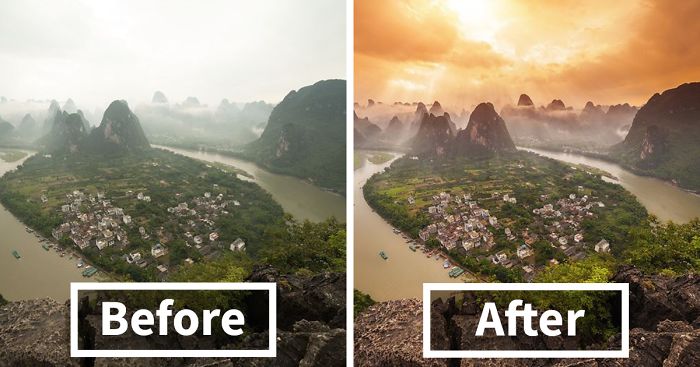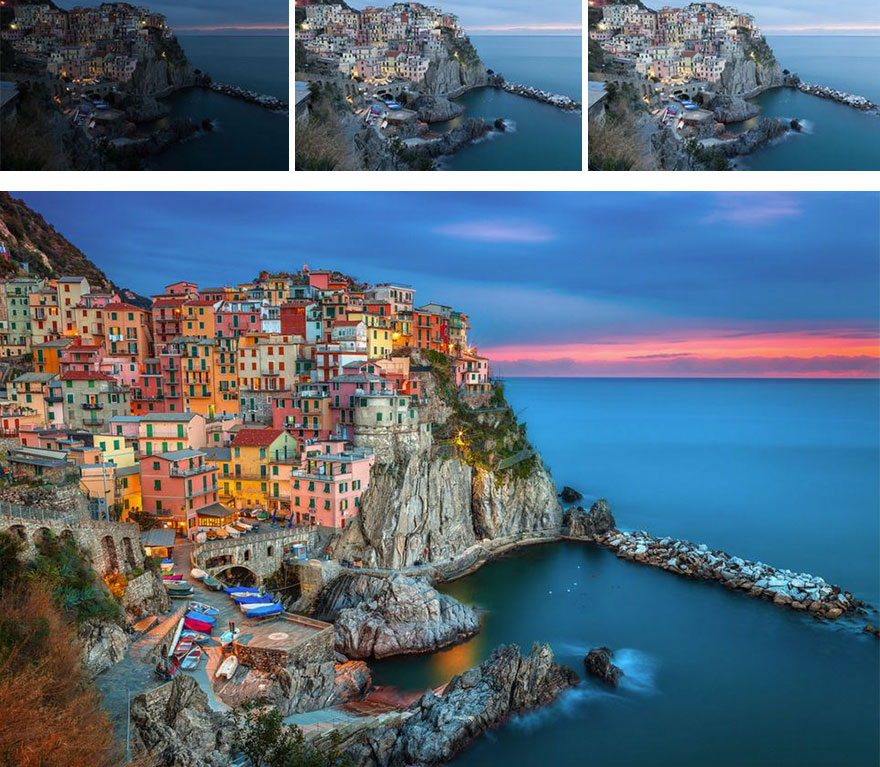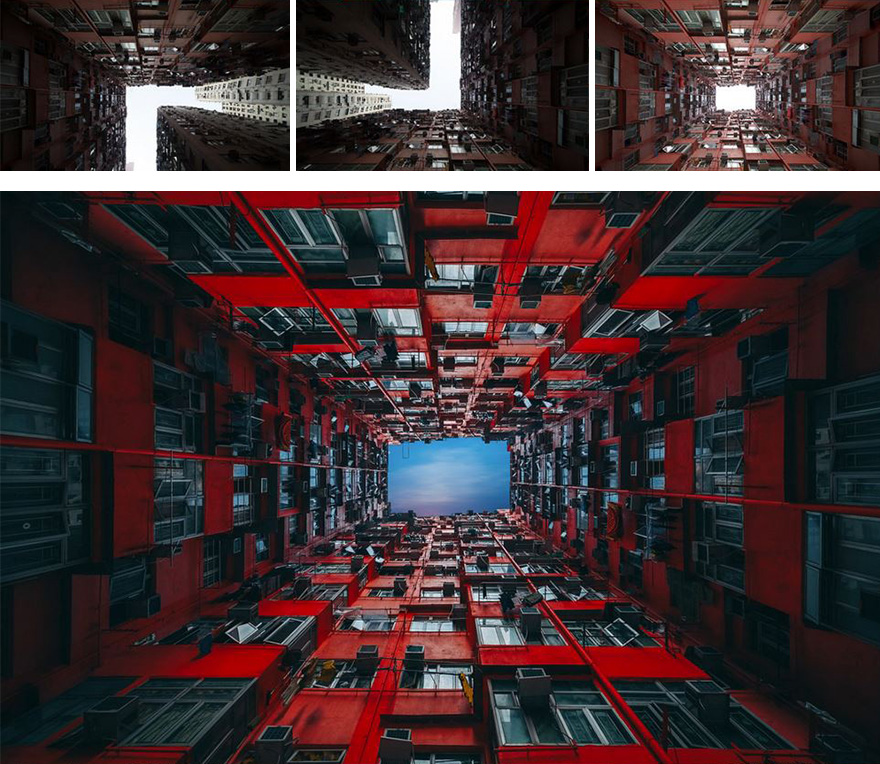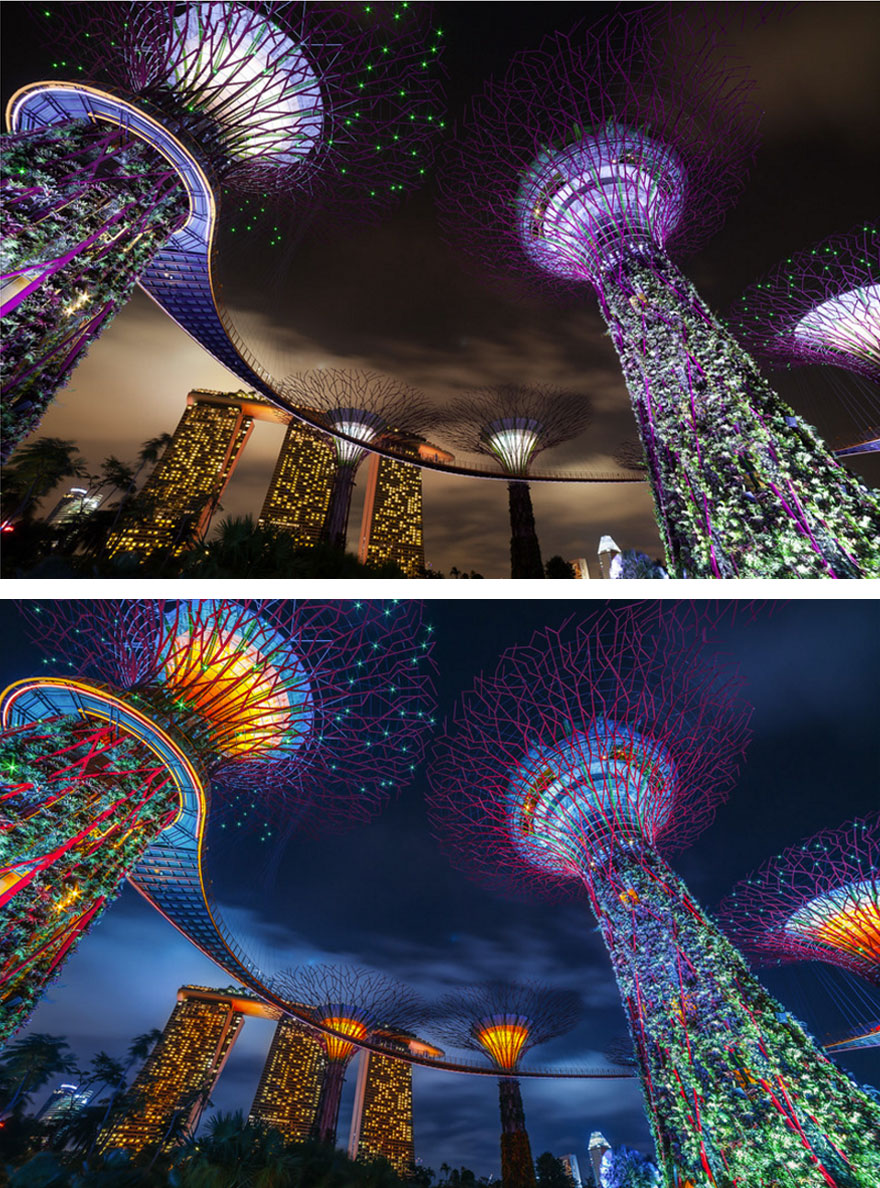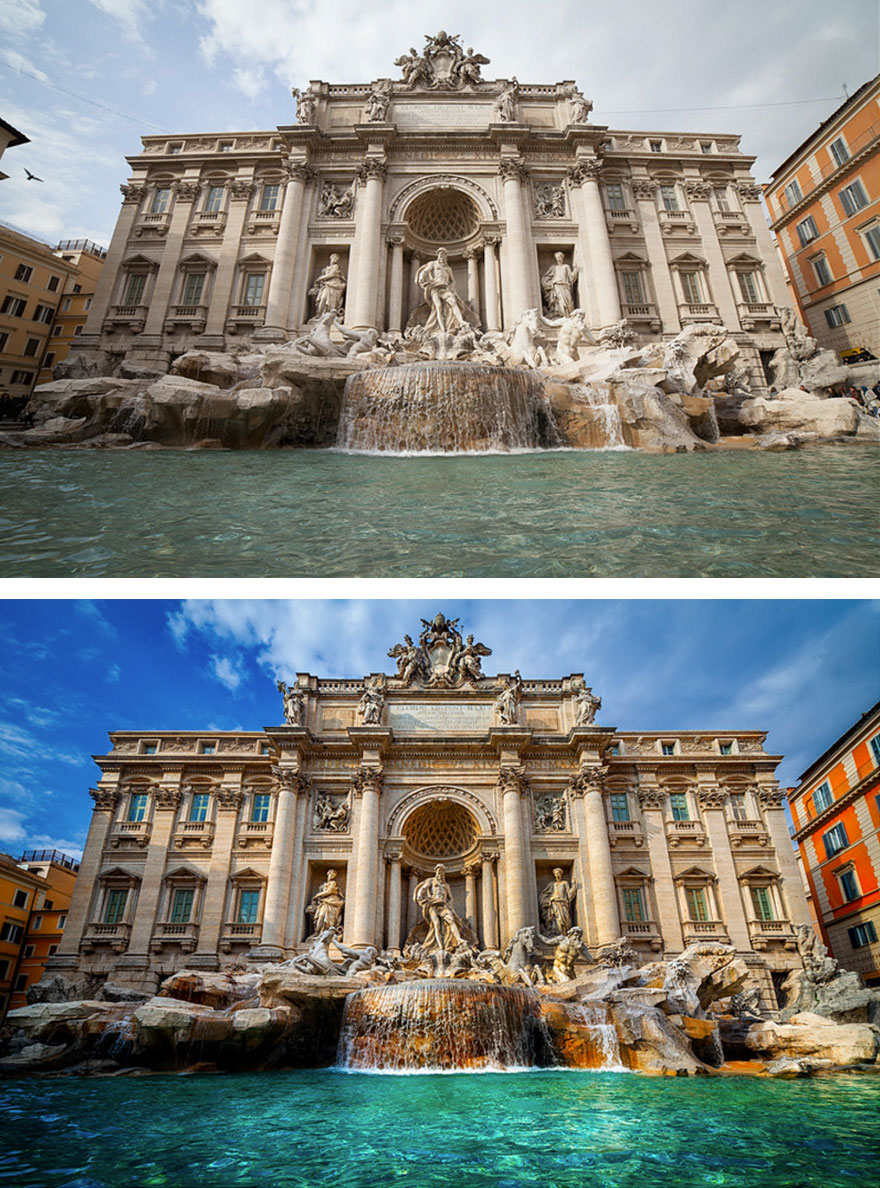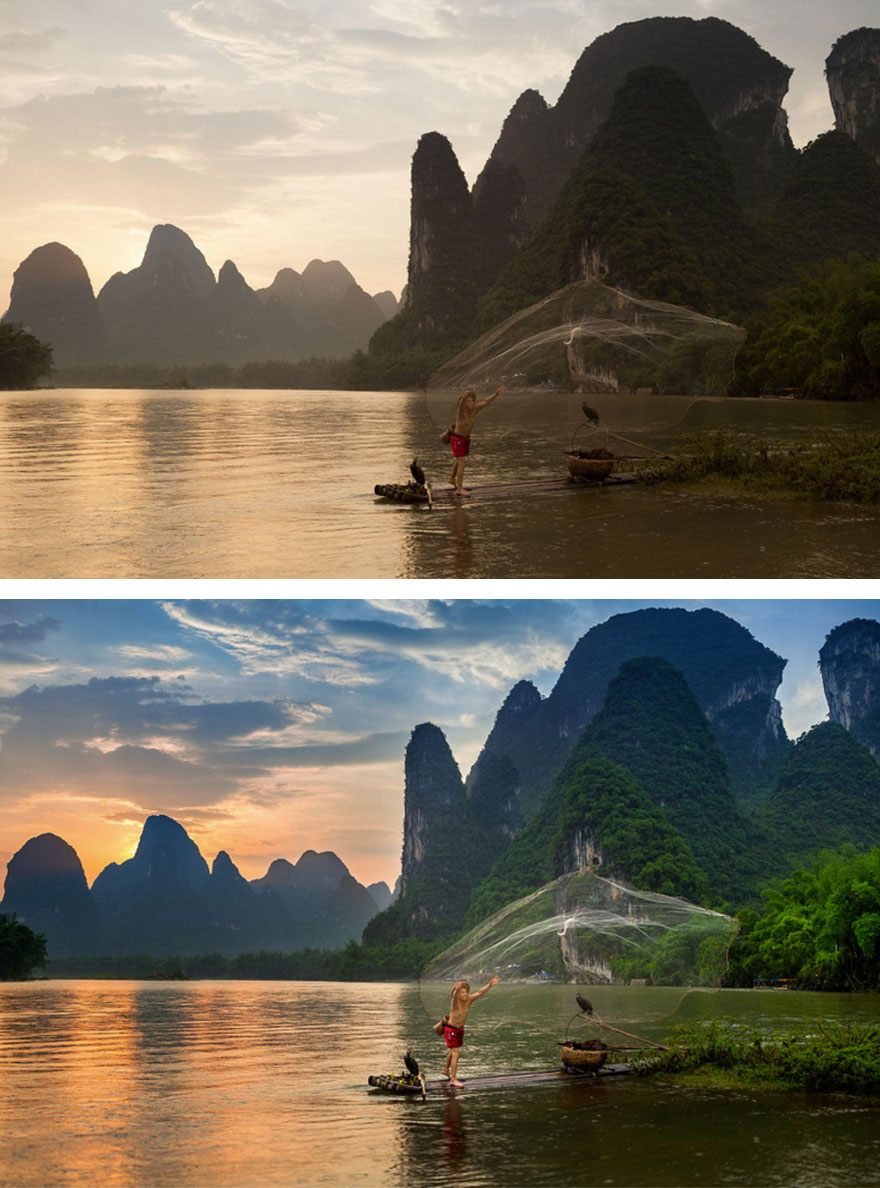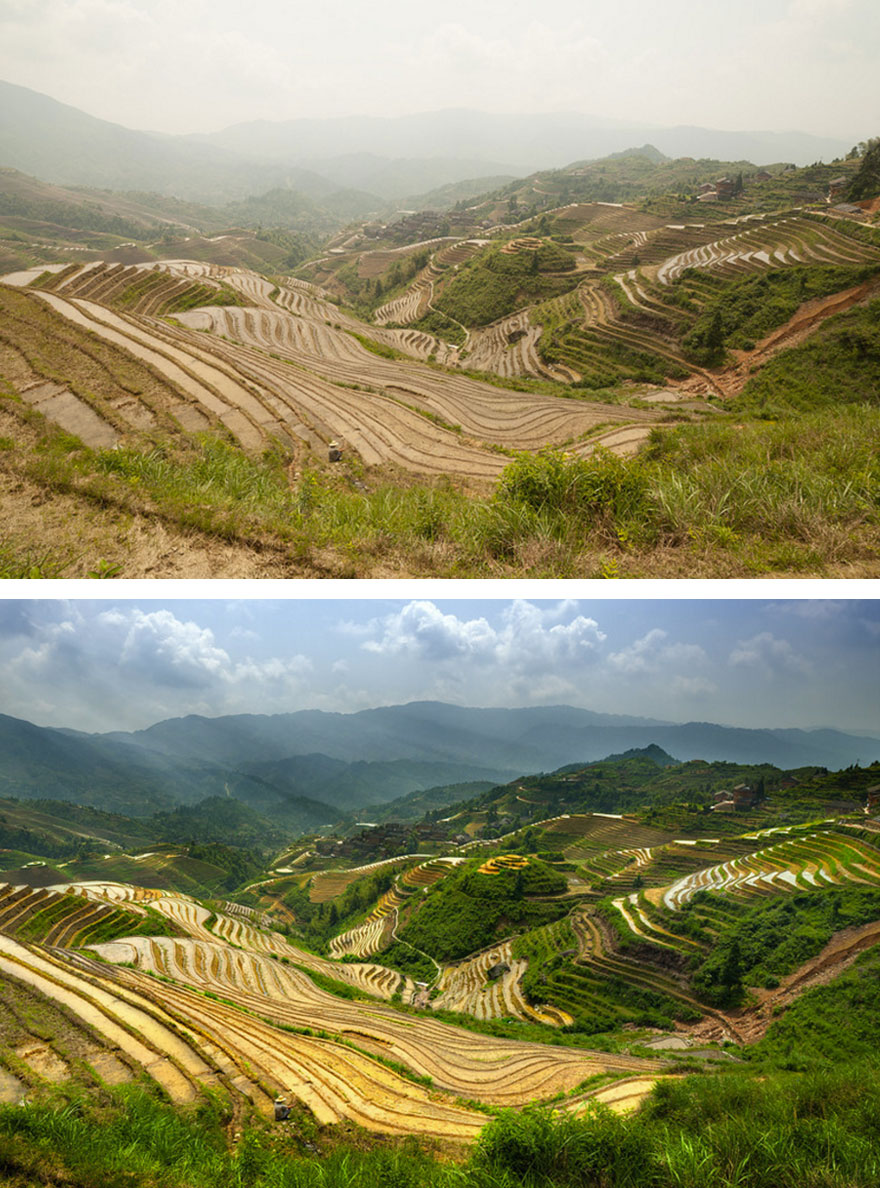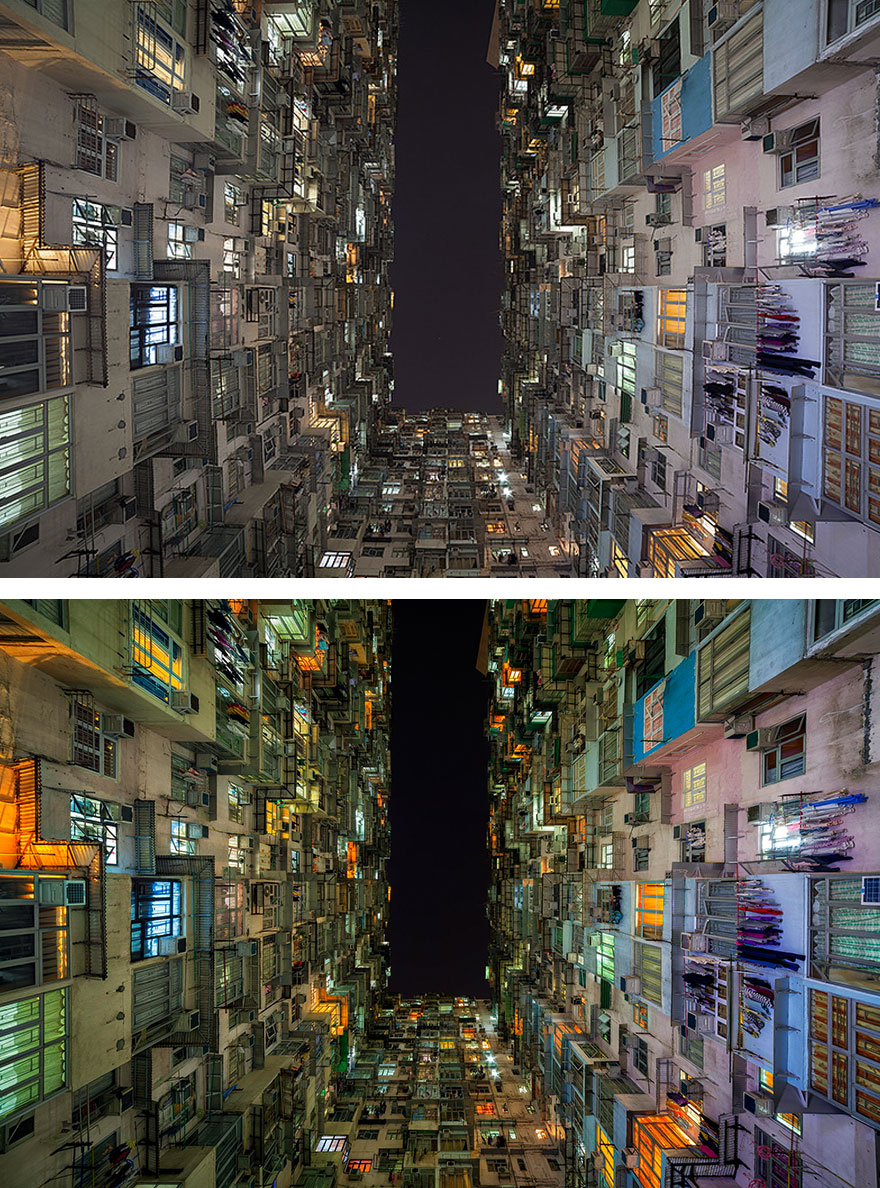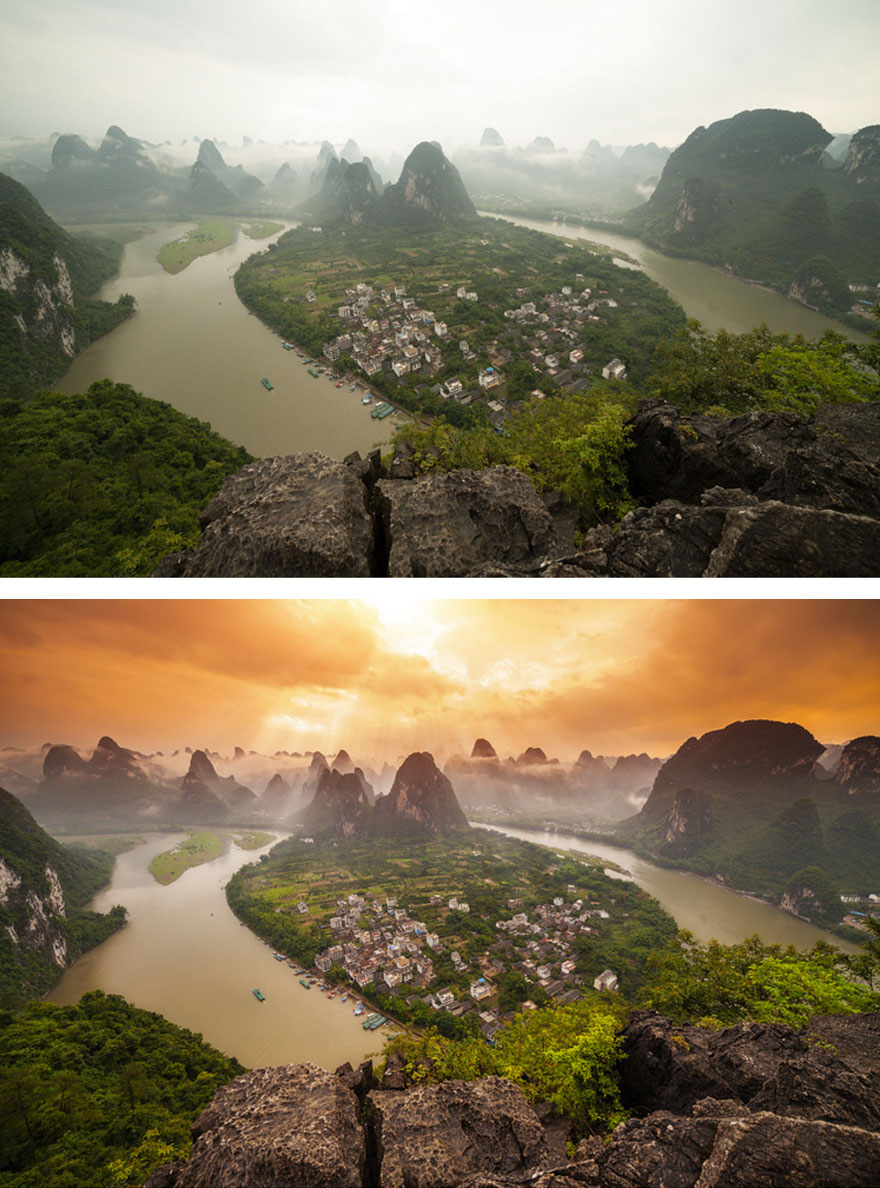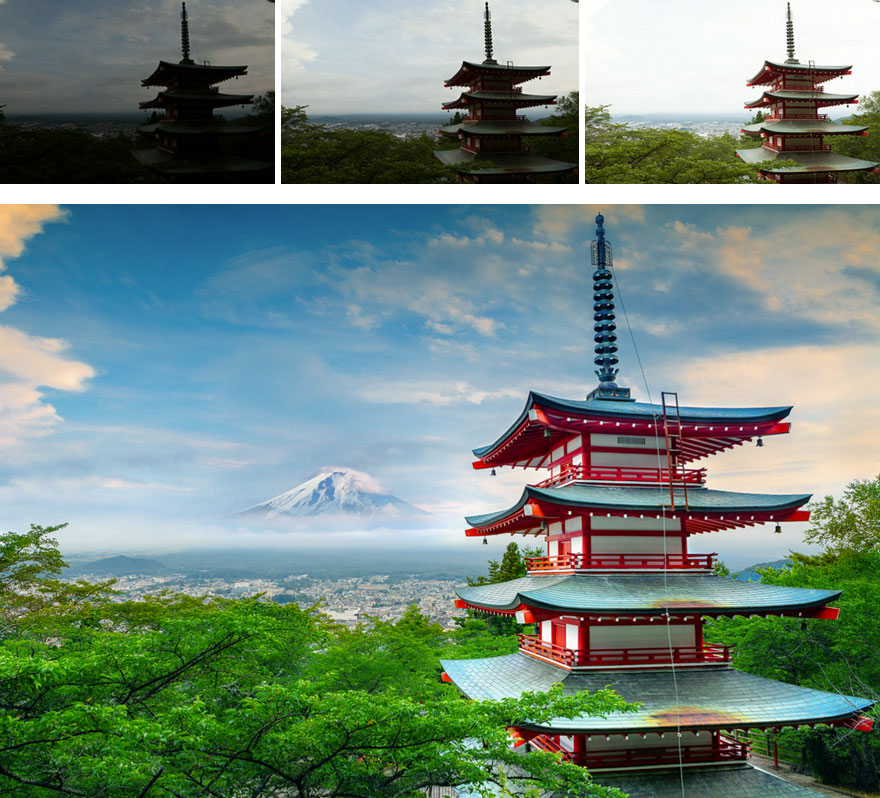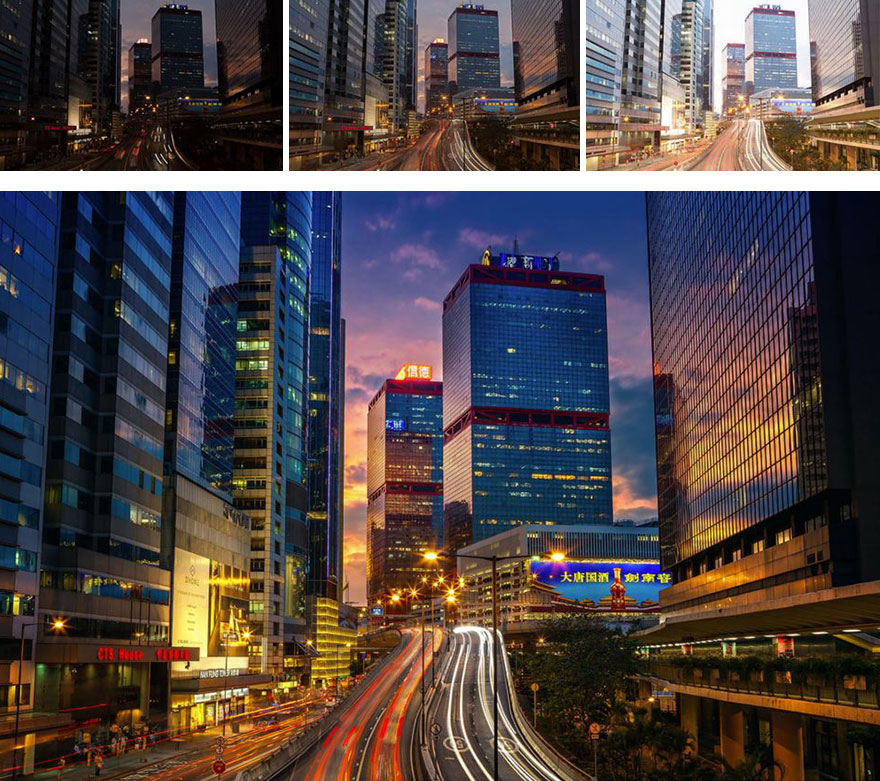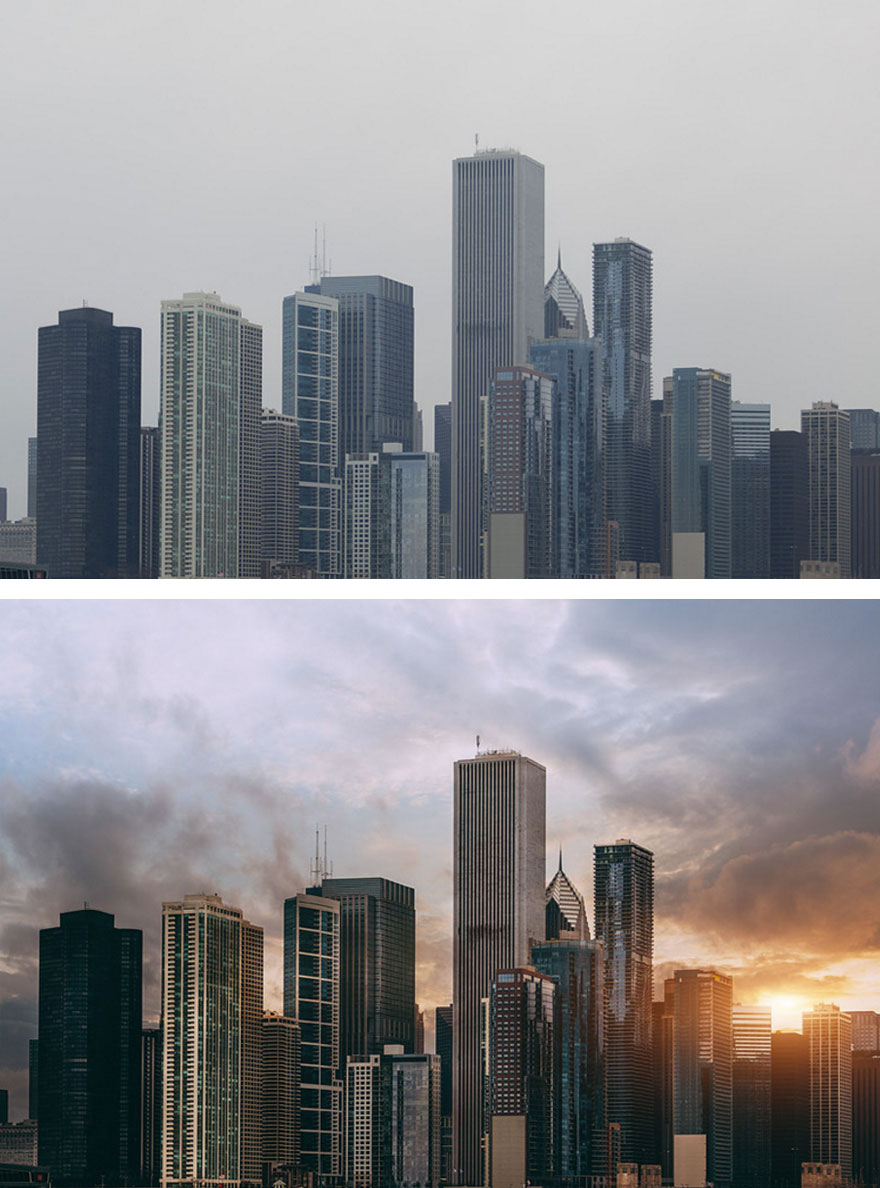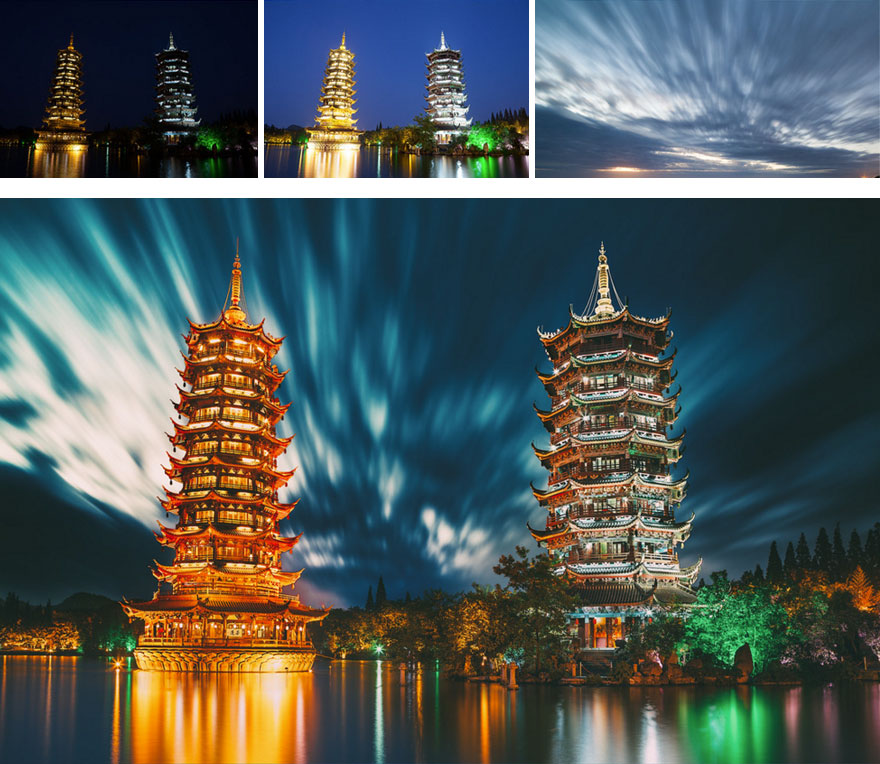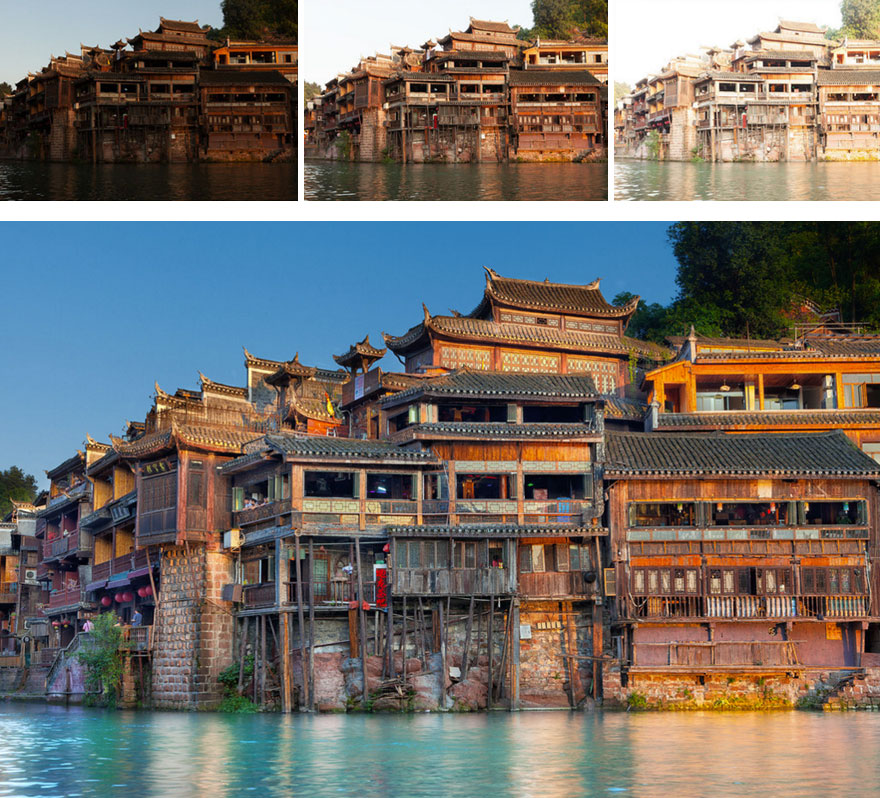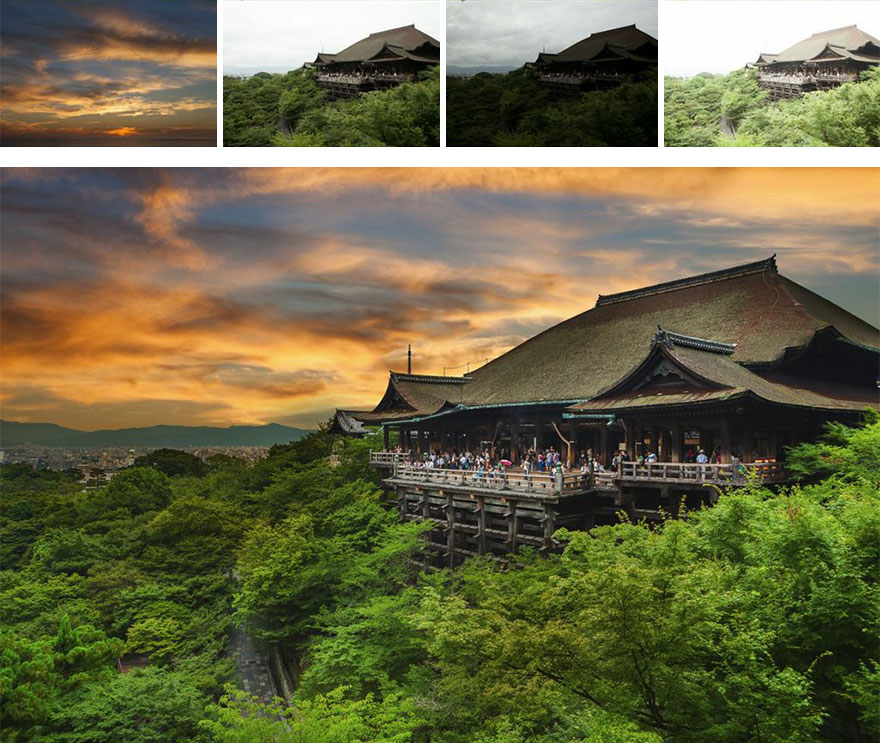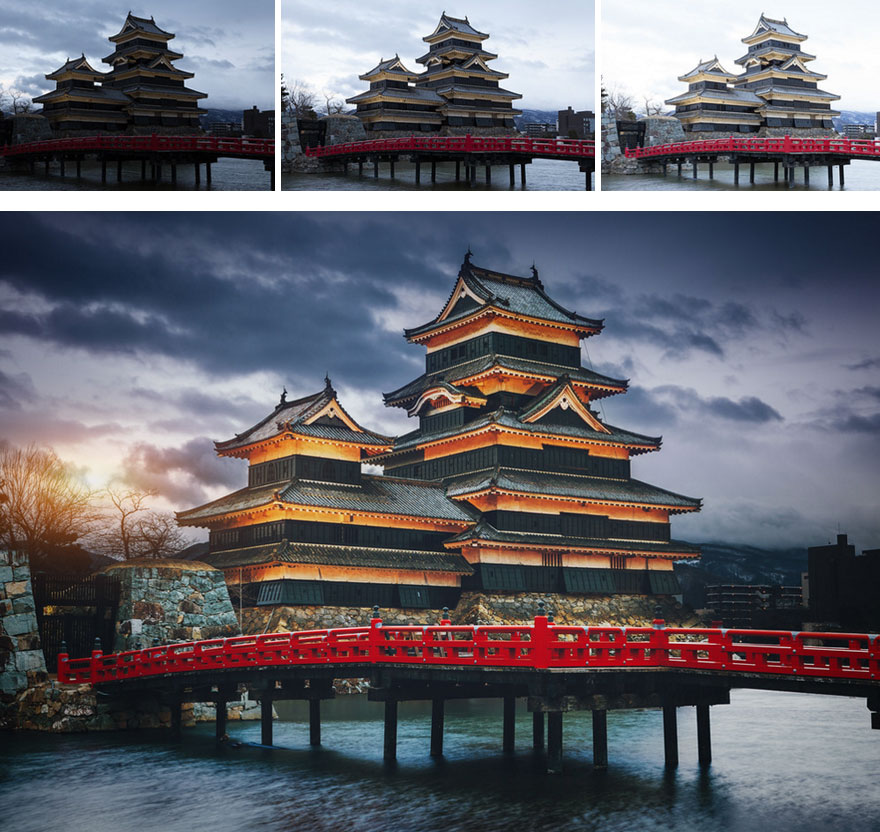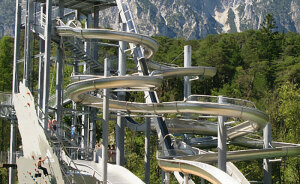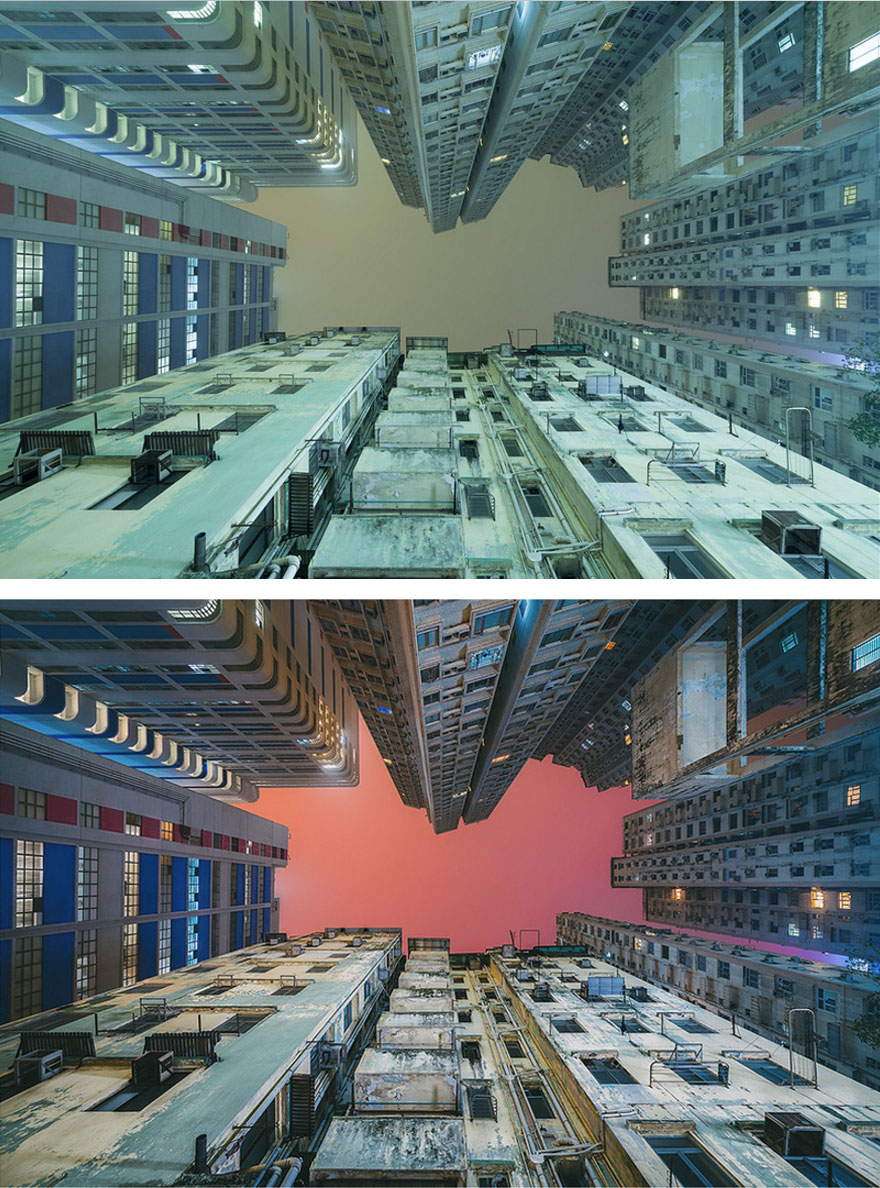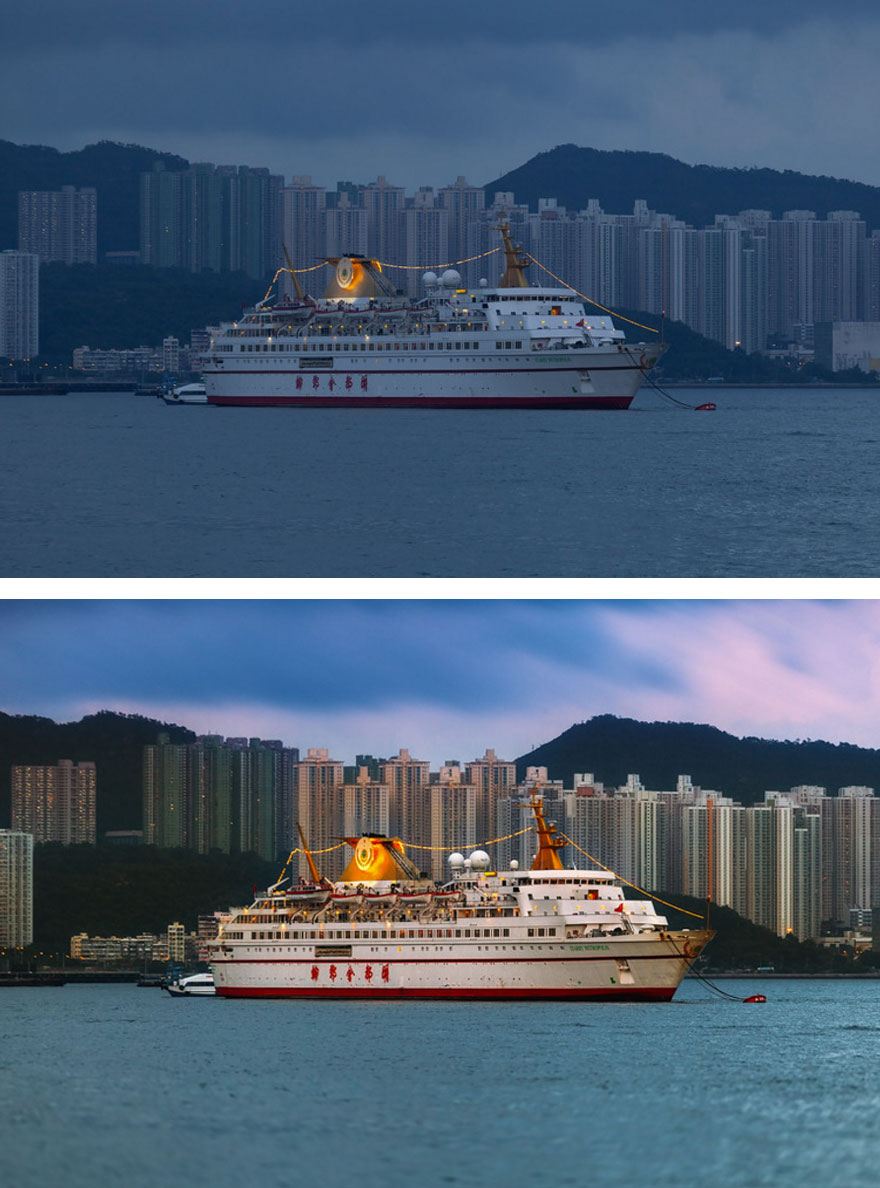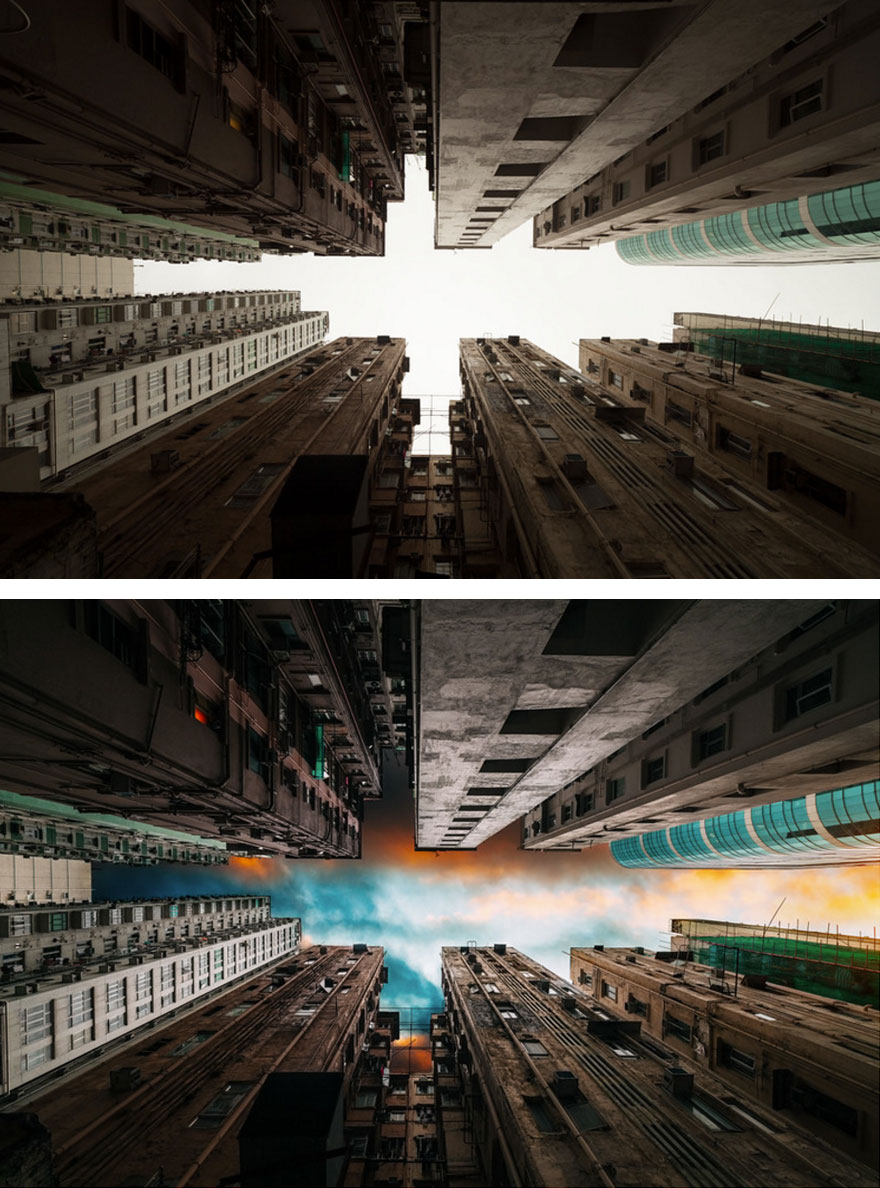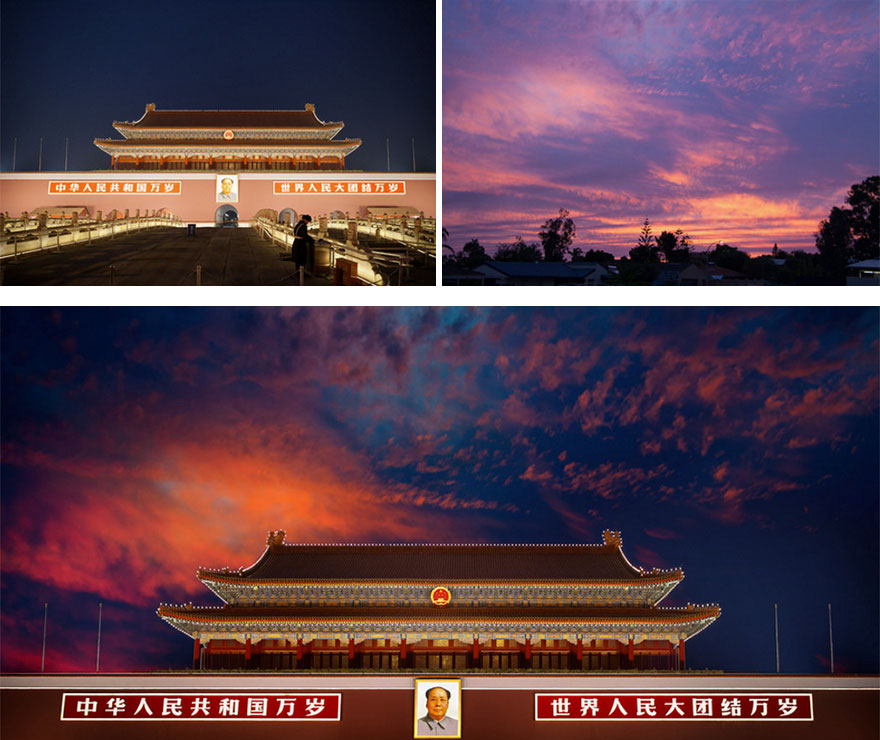Taking a good picture isn't easy. Taking an awesome picture is even harder. And taking an impossible picture is, well, impossible. Unless you use Photoshop that is.
Peter Stewart is an internationally published photographer with thousands of followers and millions of views. He's also a wizard with Photoshop, and you can see from these revealing before and after pictures just what sort of difference some clever editing can make.
“I like to approach my digital photography with a certain sense of the fantastical and the surreal,” Stewart told PetaPixel. He uses a technique called bracketed multiple exposure, which allows him to retain highlight details from different photographs before stacking them together into one picture.
“These before and after samples are simply meant to highlight what can be done with the power of Photoshop,' says Stewart. "As such, I have deliberately provided the most dramatic examples.”
More info: Peter Stewart | 500px | Instagram | Flicker (h/t: demilked, PetaPixel)
This post may include affiliate links.
HDR Bracketing Manually Blended In Photoshop. Nik Color Efex Pro Used For Post-Production
Single Raw Image Copied Twice Then Flipped And Cut Diagonally, Then Masked To Create A Seamless Join. Image Then Brightened To Reveal Detail
Color Temperature Adjustment Using Adobe Cameraraw
Perspective Re-Correction And Power Line Removal In Photoshop. Color Enhancements Using Color Efex Pro
Various Sky Adjustments Performed In Photoshop. Nik Color Efex Pro Used For Post-Production Color Enhancements
Overexposed Image With Detail Brought Back Using Camera Raw. Nik Color Efex Pro Used For Post-Production Color
This is the only one I like, as it still looks real. The others are over manipulated and just scream "photoshop", which in my mind, then totally takes away from the photo.
Single Exposure Edit
Gradual Orange Sky Gradient And Color Adjustments Performed In Adobe Cameraraw. Sunrays Created In Photoshop, With Added Glow
HDR Bracketing Composited Using Photoshop's 'Merge To HDR'. Nik Color Efex Pro Used For Post-Production
i can vaguely see mt Fugi in the first two exposures, however the final image looks very photoshopped. Like the mountain was popped in from a completely different image. That's not what you want in most final images .
HDR Bracketing Manually Blended In Photoshop. Nik Color Efex Pro Used For Post-Production
Multiple Exposure Blended File
Adjustments To Contrast And Color To Reduce Haze And 'Warm Up' The Image. Composite Sky Blended Into Frame, With Sun Glow Added In
Kodachrome They give us those nice bright colors They give us the greens of summers Makes you think all the world’s A sunny day, oh yeah
2x Exposures Manually Blended In Photoshop. Perspective Fixed In Cameraraw. Color Adjustments Made Using Nik Color Efex Pro
HDR Bracketing Manually Blended In Photoshop. Nik Color Efex Pro Used For Post-Production Color Enhancements
3x Exposures Manually Composited In Photoshop CC. Replacement Sky Layer Manually Overlaid And 'Painted' In
the cloud image does not follow the light source and coloring of the building and jungle.
HDR Bracketing Manually Blended In Photoshop. Nik Color Efex Pro Used For Post-Production
Contrast And Color Temp Corrected. Color Enhancements Made Using Vsco And Nik Color Efex Pro
Nik Color Efex Pro Used For Post-Production Color Enhancements
Some of the photo's look better in their natural state, and others not so much.
Tonal Adjustments Made Using Nik Color Efex Pro. Composite Sky Blended Into Frame Manually
a camera will never capture how you really see it and how you feel about it
Indeed. So there we have image editing programs to help us achieve the feeling. Nothing wrong with that. Just artistic photography.
Load More Replies...This article seems to be implying that professional photographers and "online pictures" are largely all so good, because they use bracketing and HDR. Maybe it's because this process appears more manual, and therefore more skillful. There's a reason you don't see this type of work in National Geographic for example. 20 years ago there were special categories in photography magazines for manipulated photos, mainly to showcase new techniques just for what they're worth. In my mind that's where these photos should stay. Secondly, these are very standard tourist shots and angles. The real essence of photography, timing and framing, is lost completely to what is basically saturation. This is kind of teaching the people of the internet to think that all the real skill is in post-production, when that is in fact a completely separate issue for serious pros. The great photos of the world are not photoshopped in any way, and that's what makes them good.
I quite agree with your assessment, "badly printed postcards", or standard magazine add fare, and already forgotten. No waiting for the light, no thousand shots for the one, no freezing in -30 or out at 3:00 am. Just grab some images and do what you can with them.
Load More Replies...It's photographer's desicion how they would want to present their images. That's why there are different styles and different people. Nobody can force you to like something that you don't but you can't say what is right and what is wrong. It's a matter of choise.
a camera will never capture how you really see it and how you feel about it
Indeed. So there we have image editing programs to help us achieve the feeling. Nothing wrong with that. Just artistic photography.
Load More Replies...This article seems to be implying that professional photographers and "online pictures" are largely all so good, because they use bracketing and HDR. Maybe it's because this process appears more manual, and therefore more skillful. There's a reason you don't see this type of work in National Geographic for example. 20 years ago there were special categories in photography magazines for manipulated photos, mainly to showcase new techniques just for what they're worth. In my mind that's where these photos should stay. Secondly, these are very standard tourist shots and angles. The real essence of photography, timing and framing, is lost completely to what is basically saturation. This is kind of teaching the people of the internet to think that all the real skill is in post-production, when that is in fact a completely separate issue for serious pros. The great photos of the world are not photoshopped in any way, and that's what makes them good.
I quite agree with your assessment, "badly printed postcards", or standard magazine add fare, and already forgotten. No waiting for the light, no thousand shots for the one, no freezing in -30 or out at 3:00 am. Just grab some images and do what you can with them.
Load More Replies...It's photographer's desicion how they would want to present their images. That's why there are different styles and different people. Nobody can force you to like something that you don't but you can't say what is right and what is wrong. It's a matter of choise.
